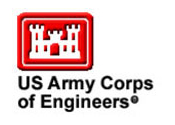
Corps releases assessment of cargo traffic on Chicago Area Waterway System
FOR IMMEDIATE RELEASE
December 7, 2011
Contact:
Sarah Gross 312-846-5334
Sarah.D.Gross@usace.army.mil
CHICAGO - The U.S. Army Corps of Engineers released Dec. 7 the Baseline Assessment of Cargo Traffic on the Chicago Area Waterways System (CAWS), an interim product of the Great Lakes and Mississippi River Interbasin Study (GLMRIS). The report is available on the GLMRIS website at www.glmris.anl.gov.
This assessment is intended to present commodity traffic data, as it relates to its movement into CAWS, through CAWS and within CAWS. The report also details commodity traffic and commodity group traffic through the CAWS locks, relative to the CAWS and the overall Illinois Waterway passing through the Lockport Lock and Dam, the Thomas J. O'Brien Lock and Dam and the Chicago Harbor Lock and Dam; historic traffic trends; consumers of the products and how they are typically used and how they generally move throughout the system.
In September 2011, the Corps released the Baseline Assessment of Non-Cargo Traffic, which assessed lock traffic by commercial passenger, recreational and governmental vessels. The data from these two reports will be used to develop navigation system models and waterway traffic forecasts in order to make the best potential recommendation for aquatic nuisance species controls on the waterway and, if necessary, mitigation measures.
The Corps will host a conference call on Jan. 5 at 10 a.m. (CST) for interested parties to ask questions on the Cargo Assessment. Call in information is: USA Toll-Free: 877-336-1839, Access Code: 8506361
The Baseline Assessment of Cargo Traffic on the CAWS is one of several GLMRIS interim products released this year. In July, the Corps released the Aquatic Nuisance Species (ANS) White Paper, which catalogues potential non-native species within the Great Lakes and Mississippi River basins and identifies ANS of Concern. The NEPA Scoping Summary Report, released by the Corps early September, documents the methods and procedures followed during the NEPA Scoping process and summarizes the public comments received.
During the GLMRIS process, the team will continue to compile and produce interim products, as appropriate. As with most complex studies, it is expected that many of the reports will be generated from the data-gathering phase. The Corps will ensure all interim products are made available to the public as they are completed.
The purpose of GLMRIS is to determine the full range of options and technologies available to prevent ANS transfer via aquatic pathways between the Great Lakes and Mississippi River basins. The final study will consider possible ANS controls to prevent ANS transfer, analyze the impacts each ANS control may have on significant natural resources and the existing and forecasted uses of the lakes and waterways within the study area and recommend a plan to prevent ANS transfer between the basins. If necessary, the plan will include mitigation measures for impacted waterway uses and significant natural resources.
